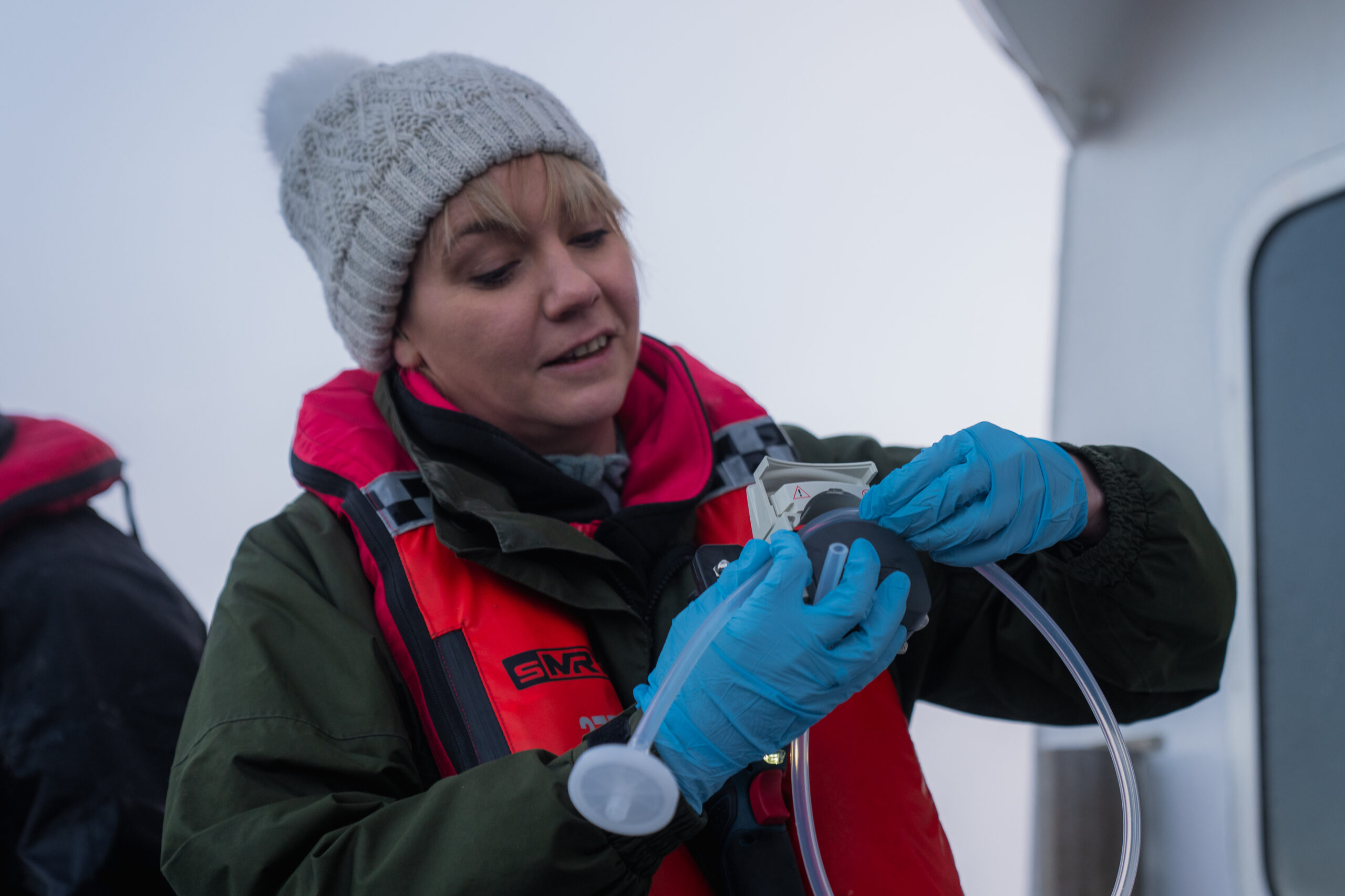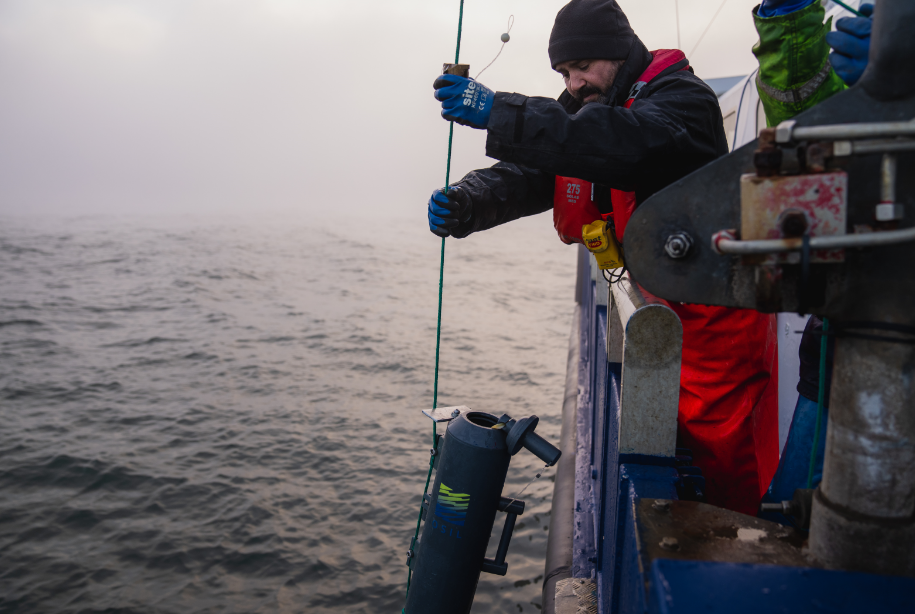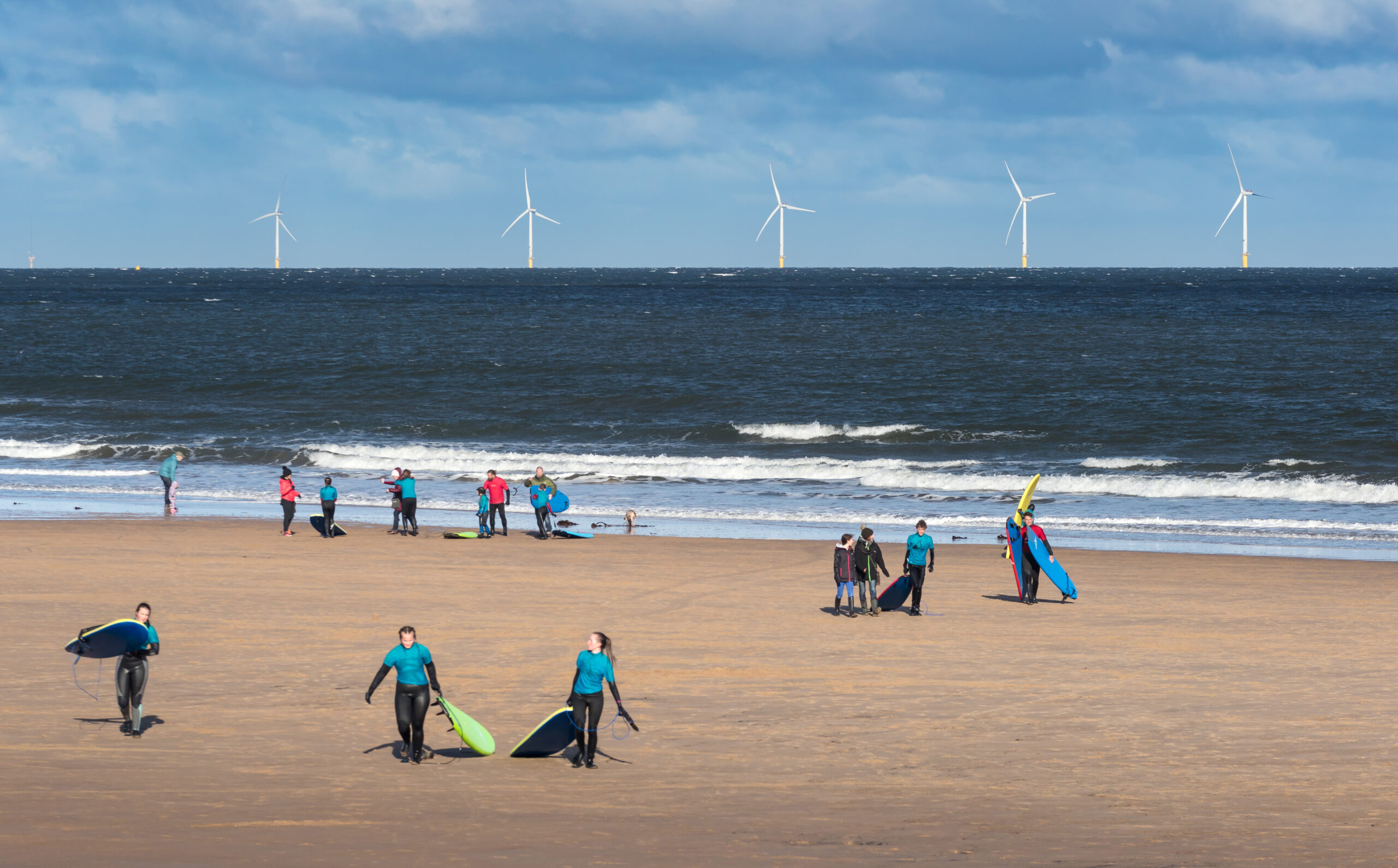Low cost offshore wind survey technique based on environmental DNA (eDNA) analysis
Business profile
Specialist consultancy and service provider with a sole focus on supporting renewable energy projects.
25 years of experience advising on offshore wind projects, with expertise from site-selection and consenting to decommissioning / repowering.
International team of >500 headquartered in Scotland.
Support recieved
Grant Funding
Solutions for the offshore wind industry
OWGP-funded collaborative project looking to demonstrate environmental DNA (eDNA) sampling as a survey method around offshore wind farms, enabling lower-cost, faster and more precise environmental data for consent applications.
Compared with traditional trawl surveys, eDNA sampling requires only small samples of seawater; reducing damage to habitats and eliminating the need for specialised vessels.
Reveals information on spatial distribution of different fish species around offshore wind farms.
A closer look at eDNA sampling
Rather than trawling fish with nets from specialised vessels and manually recording different species, eDNA sampling requires only samples of seawater to be collected from above the seabed. This offers a non-intrusive sampling method, improving the reliability and precision of offshore wind environmental data collection, from a wider range of vessels which can be combined with other site-based surveys and activities.
Impact of the support
OWGP grant funded around 50% of the project costs with Natural Power collaborating with NatureMetrics and EDF Renewables.
Successful trial of eDNA demonstrated several benefits over traditional methods, and generated novel insights that could improve understanding of offshore wind’s local environmental effects.
Results of the trial presented and made publicly available in November 2023, with the long-term aim to gain regulatory approval for the method.



Before
Natural Power was already a well-established provider in the renewable energy sector, having supported numerous offshore wind projects throughout their lifecycle. Natural Power was seeking partners to trial environmental DNA (eDNA) as a cheaper and more efficient alternative to fish trawls during offshore wind environmental impact assessments and ongoing compliance monitoring.
During
OWGP funded 50% of this collaborative research project costs and supported the team throughout with advice. The project also included NatureMetrics, who provided the eDNA sampling solution, and EDF Renewables, who facilitated a trial around its Blyth Offshore Wind Farm and provided additional funding. During the project, the team compared data on fish biodiversity around the wind farm collected via the eDNA method versus traditional fish trawls. Four surveys were conducted comparing the two methods during a period of 12 months. Due to the project’s early success, OWGP provided additional support, with a view to expanding the method to invertebrates and other marine species in the future.
After
The pilot project resulted in successful demonstration of the eDNA method through its proof-of-concept white paper, which was able to capture data on more fish species than traditional trawling. The paper demonstrates that the eDNA methodology developed allows for the calculation of ecological diversity metrics and provides robust data on spatial and seasonal changes in fish communities around OWFs. Compared with trawling, the team was also able to generate more detailed spatial data on the distribution of different fish around the offshore wind farm – including between wind turbines themselves, which are inaccessible to trawl vessels. One interesting finding is a relative abundance of bottom-feeding and reef dwelling species found close to wind turbines, indicating that foundations may provide hard substrate habitats that provide shelter, feeding and nursery grounds for certain species. The promising results of this study are now paving the way for a regulator-approved survey method, which could significantly reduce the cost and risk of delay of environmental surveys required to consent new offshore wind projects.
“As we rapidly transition to renewable energy sources to help tackle climate change, supply chain resources are under pressure so there’s never been a greater need for new technology and practices that help to maximise resources. This study, made possible in part due to OWGP Innovation Grant Funding; demonstrates that eDNA-based surveys offer a market-ready solution to optimise consenting phase surveys of offshore wind site development, as well as ongoing monitoring and targeted mitigation strategies. Regulator and stakeholder acceptance of eDNA methods for use in offshore baseline setting and monitoring will now be a key step towards accelerating and improving environmental monitoring for future offshore wind development.”

 BACK TO CASE STUDIES
BACK TO CASE STUDIES 